Public policy students tackle prickly issue of No Mow movement
December 21, 2022
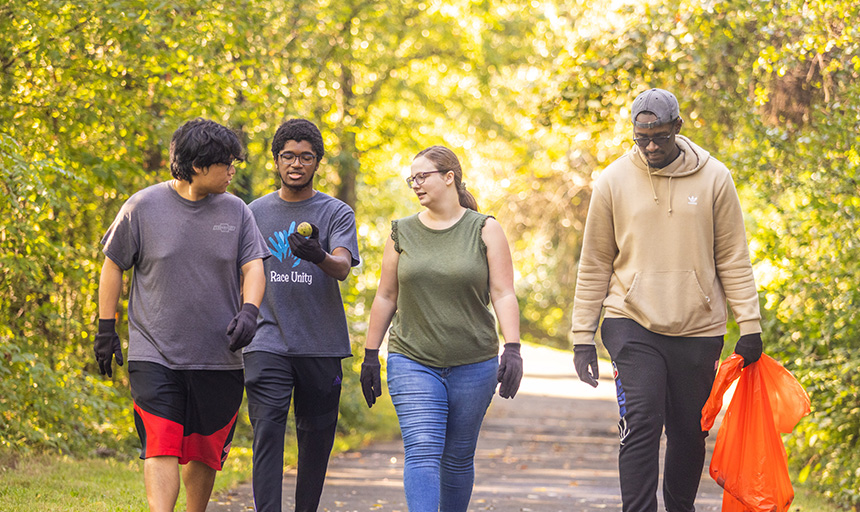
Environmental studies major Abigail Ainsley ’23 only needed to hear one thing about the “No Mow” movement to decide she was on board: It’s better for bees.
Letting grass grow longer and untamed means a healthier, more natural habitat for essential pollinators as well as more stable stream banks. What more, Ainsley wondered, could you need to know?
“When we sat down in class and started talking about how No Mow gets a lot of pushback, my first thought was, 'OK, well, too bad, it’s good for the environment,’” she said. “But this project really required me to think about all the politics that influence it, and why it’s important to get neighborhoods to side with it.”
That intersection of public policy and prickly politics was the focus of a semester-long partnership between Roanoke College's Environmental Public Policy 351 course and Roanoke Parks and Recreation. The city department asked the students to design, from the ground up, a public awareness campaign to help people understand the strategy behind No Mow and counter the skepticism of it.
Associate Professor Andreea Mihalache-O'Keef, who leads the class and chairs the Public Affairs Department, sought out the collaboration to challenge students to apply their skills to a real-world issue.
“We had to focus on explaining how each community can benefit from this, even if a person isn’t an environmentalist — which was really hard for me,” Ainsley reflected, spurring laughter from the classroom.
The focus on No Mow came from the Parks and Recreation Department. The hands-off landscaping philosophy has been growing into an international movement spurred on by the pollinator decline crisis, but it can draw consternation and complaints from citizens who mistake it for weed-germinating neglect on the part of their governments.
Roanoke hasn’t been immune from that debate. The city has tried curtailed mowing schedules along its popular greenway trails and seen the spike in citizen calls it generates.
The in-depth project, which was delivered to city staffers in a Dec. 6 presentation, put students to work doing demographic analysis on city neighborhoods, environmental research on No Mow and examinations of case studies from around the world.
The students also jumped into field work, making weekly visits to city parks to study conditions firsthand and assisting in cleanup and grounds management work.

Environmental Public Policy 351, led by Associate Professor Andreea Mihalache-O'Keef, combined research, field work and real-world strategizing to tackle a project with Roanoke Parks and Recreation.
“They came away with a better understanding of the Roanoke area and of policy-making, especially in relation to the environment,” Mihalache-O'Keef said. “They got to directly experience the global-local connection in terms of environmental causes and outcomes, and hopefully developed a better appreciation of the importance of local governments in those issues.”
To put together an effective campaign, the class had to look at the issue from all angles, anticipate arguments and craft attention-grabbing messages to respond to them.
The final presentation — which included plans for social media graphics, signage, newsletters and in-person outreach via the city’s volunteer Greenway Ambassadors — built a multi-part case for No Mow beyond just the plight of pollinators.
Did you know, for example, that less frequent mowing saves taxpayer dollars on manpower and landscaping resources? Or that it can help protect homes from flooding by supporting stronger, more stable streambeds?
Studies also point to it as a factor in tamping down the presence of allergens, such as ragweed, and other unwelcome lawn invaders.
Roanoke Trails and Greenways Coordinator Renee Powers said she was impressed by the many tacks that the class took in its work.
“I really appreciate the energy you all put into this,” she told the students after their presentation. “It definitely shows that you put a lot of thought into the issue and took a deep dive — not only into No Mow or Low Mow — but into the type of neighborhoods we’re talking about and how to communicate with all folks, including those who might not be so tech savvy or plugged into social media.”

Students met with Roanoke Parks and Recreation representatives Dec. 6 to share their final presentation and takeaways from this semester's hands-on project.
Powers added that she felt the students had succeeded in creating a meaningful template that city leaders could work from when the next mowing season arrives in the spring. “There are a lot of good, strong points here on how to get the message across,” she said.
The students, in their own debrief on the project at the end of the semester, said they gained a deeper understanding of what it takes to balance numerous competing needs and viewpoints when developing policies. The level of communication, thought and empathy required to build consensus was one of the reoccurring takeaways.
“It was a unique experience to actually get to work with a government organization,” said Arlo-Andre Allotey ’24, an international relations major. “It was almost like getting work experience because we had to present real ideas to them. I liked the fact that we had to try to help them.”
Allotey, who’s interested in heading to law school after graduation, said figuring out how to translate dense, scientific jargon into everyday language was another eye-opening lesson that he’ll carry with him beyond this semester.
“That piece, learning how to present things to people, is definitely an area where I grew,” he said. “We had to figure out how to communicate our ideas in ways that were clear, concise and to the point, so people wouldn’t get bored.”
Overall, Allotey said, he appreciated the chance to be part of the project — he didn’t even mind the mornings when the class had to meet at 7 a.m. to work in the parks.
“Being in the parks gave us a better understanding of what we needed to do,” he said, “and showed us why it mattered so much.”
Below: The final recommenations presented by Environmental Public Policy 351 students included plans for social media graphics, signage, newsletters and in-person outreach to help boost awareness of the benefits of No Mow. 
Environmental Public Policy 351

Arlo-Andre Allotey ’24 shares some of the research done by Environmental Public Policy 351 students during their final presentation to Roanoke Parks and Recreation.
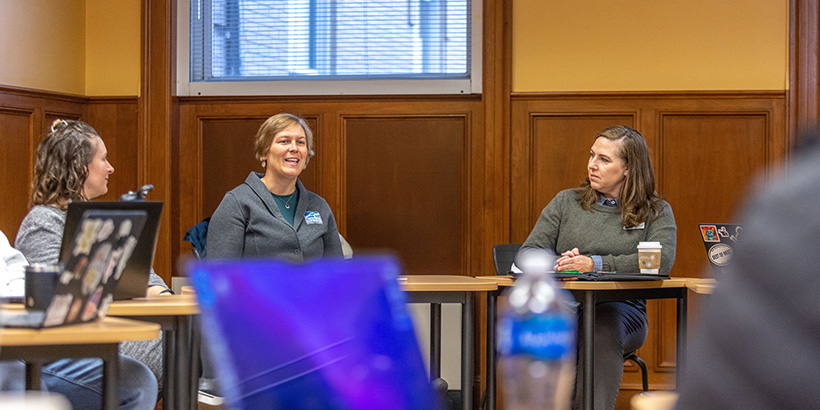
Roanoke Trails and Greenways Coordinator Renee Powers said she was impressed by the many tacks that the class took in its work. “There are a lot of good, strong points here on how to get the message across,” she said.
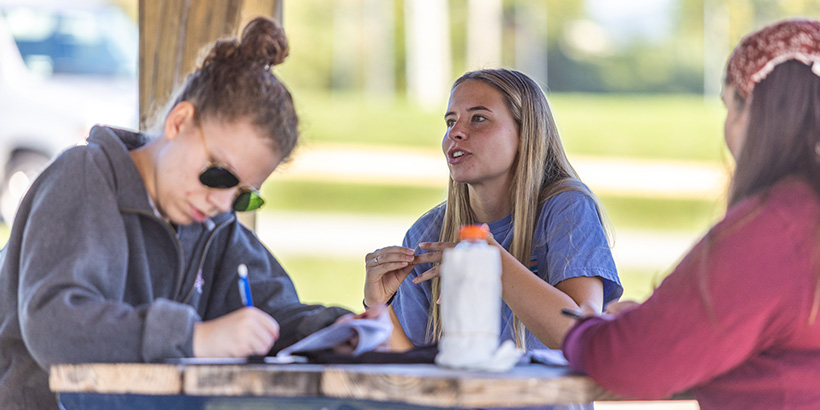
Abigail Ainsley ’23, an environmental studies major, was among the students who got to combine classroom research with hands-on field work in this semester's Environmental Public Policy 351 course.
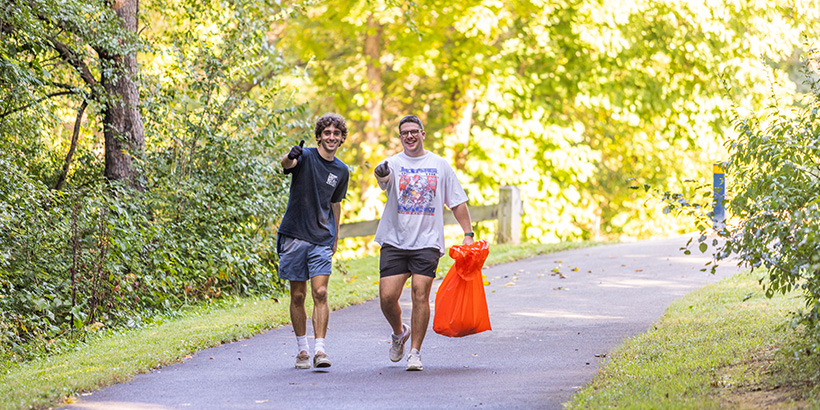
In addition to their classroom work, this semester's students jumped into field work, making weekly visits to city parks to study conditions firsthand and assisting in cleanup and grounds management work.
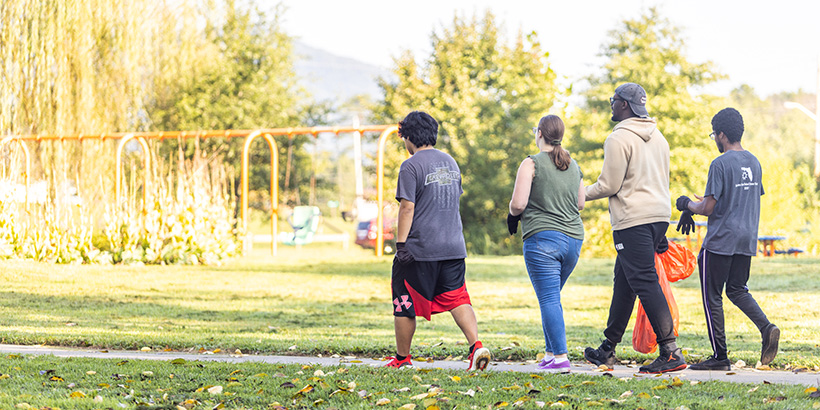
In addition to their classroom work, this semester's students jumped into field work, making weekly visits to city parks to study conditions firsthand and assisting in cleanup and grounds management work.